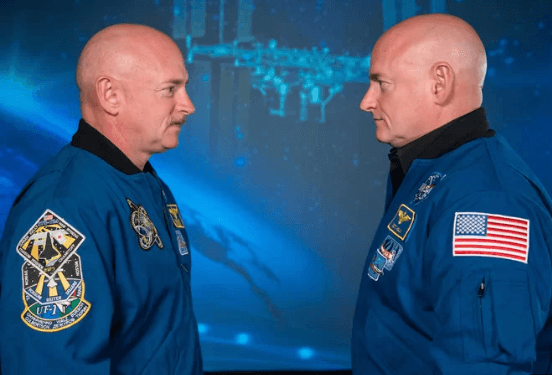Wat de ruimte met je doet
Wat de ruimte met je doet

Scott Kelly (links) zat een jaar in het Internationale Ruimtestation. Bij terugkeer was hij 5cm langer, hij woog minder, en zijn darmflora was compleet veranderd. En een groot deel van zijn genetische samenstelling was zelfs veranderd. Langdurig leven in de ruimte veroorzaakt aanpassingen in het lichaam, zelfs op genetisch niveau. Scott heeft inmiddels zijn oude lengte weer, en zijn DNA is ook weer grotendeels in de oude toestand – maar 7% van zijn cellen zit nog op ‘ruimteniveau’ en is misschien permanent anders. Volgens NASA zijn dat de genen die betrokken zijn bij het immuunsysteem, bij botvorming, de zuurstofverwerking en ook DNA-reparatie. Tegenover hem staat Mark, zijn identieke tweelingbroer, die op aarde bleef en dient als referentiemateriaal.
CORRECTIE (dank aan tip VincentDV): Dit artikel is inmiddels gerectificeerd. Er zaten nog al knoeperds van blunders in. Gelukkig was Livescience zo fair het ruiterlijk toe te geven en in een follow-up de juiste interpretaties te publiceren.
“We Were Totally Wrong About That Scott Kelly Space Genes Story
Brothers Scott (left) and Mark Kelly are the only identical twin astronauts in history.
Credit: Courtesy NASA Twins Study
On Monday (March 12), we published a story about astronaut Scott Kelly returning after a year in space with big changes to his genetic code, so much so that he was no longer his brother’s identical twin.
It turns out we got the story wrong in a big way. In the original story, we reported that 7 percent of Kelly’s genetic code had changed after his stint in space. But that enormous level of genetic change would mean Kelly went to outer space and came back a space alien: All humans share more than 99 percent of our DNA, and we share more than 98 percent of our DNA with chimpanzees, our closest living relatives.”
